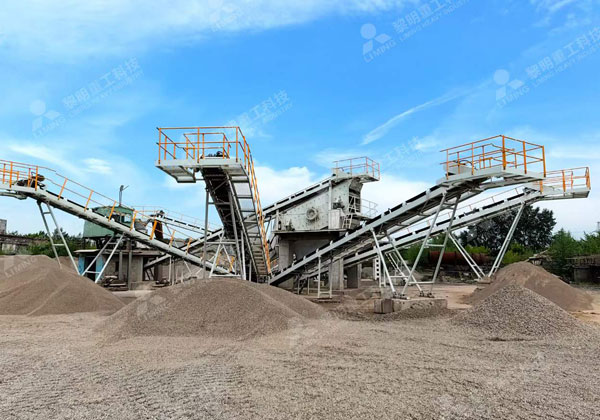Aggregate screening equipment plays a crucial role in the production of high-quality construction materials. One of the key components of this equipment is the vibrating screen, a versatile and efficient tool designed to separate and classify different sizes of aggregates. In this discussion, we will explore the functionality, types, advantages, and applications of vibrating screens in the context of aggregate screening.
Functionality:
A vibrating screen is a mechanical device that utilizes vibrating motors to impart motion to the screening surface. This motion ensures the efficient separation of aggregates based on their size. The primary function of the vibrating screen in aggregate screening is to separate the materials into different grades according to their particle size.

The basic operation involves feeding the aggregate material onto the vibrating screen. The vibration generates mechanical forces that move the particles along the screen and classify them based on size. The screen deck may consist of one or more layers of woven wire mesh, rubber, or polyurethane, each with specific characteristics to facilitate optimal screening.
Key Features of Vibrating Screens:
- Vibration Mechanism: Vibrating screens utilize a vibratory mechanism to induce vibrations in the screening surface. This mechanism can be driven by electric motors or hydraulic systems, generating a dynamic and efficient screening process.
- Screen Surface: The screen surface is a critical component, and it can be made of various materials, such as woven wire mesh, polyurethane, rubber, or perforated metal plates. The choice of material depends on the specific application and the type of material being processed.
- Deck Configuration: Vibrating screens typically have multiple decks or levels of screening surfaces stacked one above the other. Each deck plays a role in the classification of different-sized particles.
- Adjustable Inclination: Some vibrating screens are equipped with an adjustable inclination angle, allowing operators to optimize the screening process for different materials and particle sizes.
Benefits of Vibrating Screens in Aggregate Screening:
- Efficient Particle Separation: Vibrating screens efficiently separate particles of different sizes, ensuring the production of high-quality aggregates with consistent specifications.
- Versatility: These screens can handle a wide range of materials, including crushed stone, sand, gravel, and recycled materials.
- Reduced Downtime: The robust construction of vibrating screens contributes to their durability and reliability, minimizing downtime and maintenance requirements.
- Customization: Vibrating screens can be customized to meet specific application requirements, including screen surface material, deck configuration, and inclination angle.
- Increased Production Capacity: Efficient screening processes result in increased production capacity, allowing aggregate producers to meet the demands of construction projects.
In conclusion, vibrating screens are indispensable components in aggregate screening equipment, playing a pivotal role in the production of high-quality aggregates for the construction industry. Their versatility, efficiency, and customizable features make them essential in processing various materials and meeting the diverse needs of the aggregate industry.
